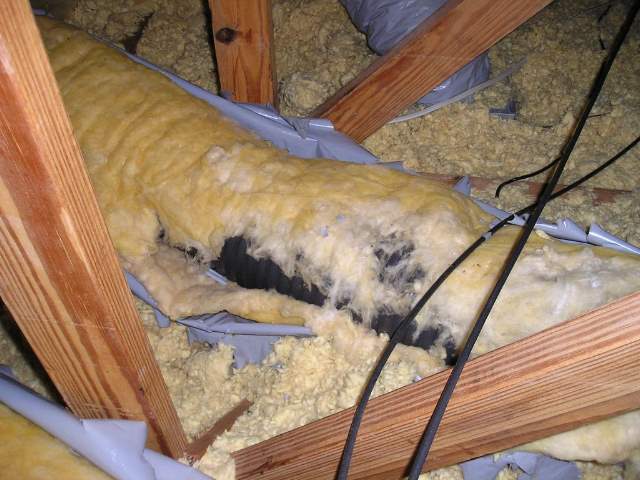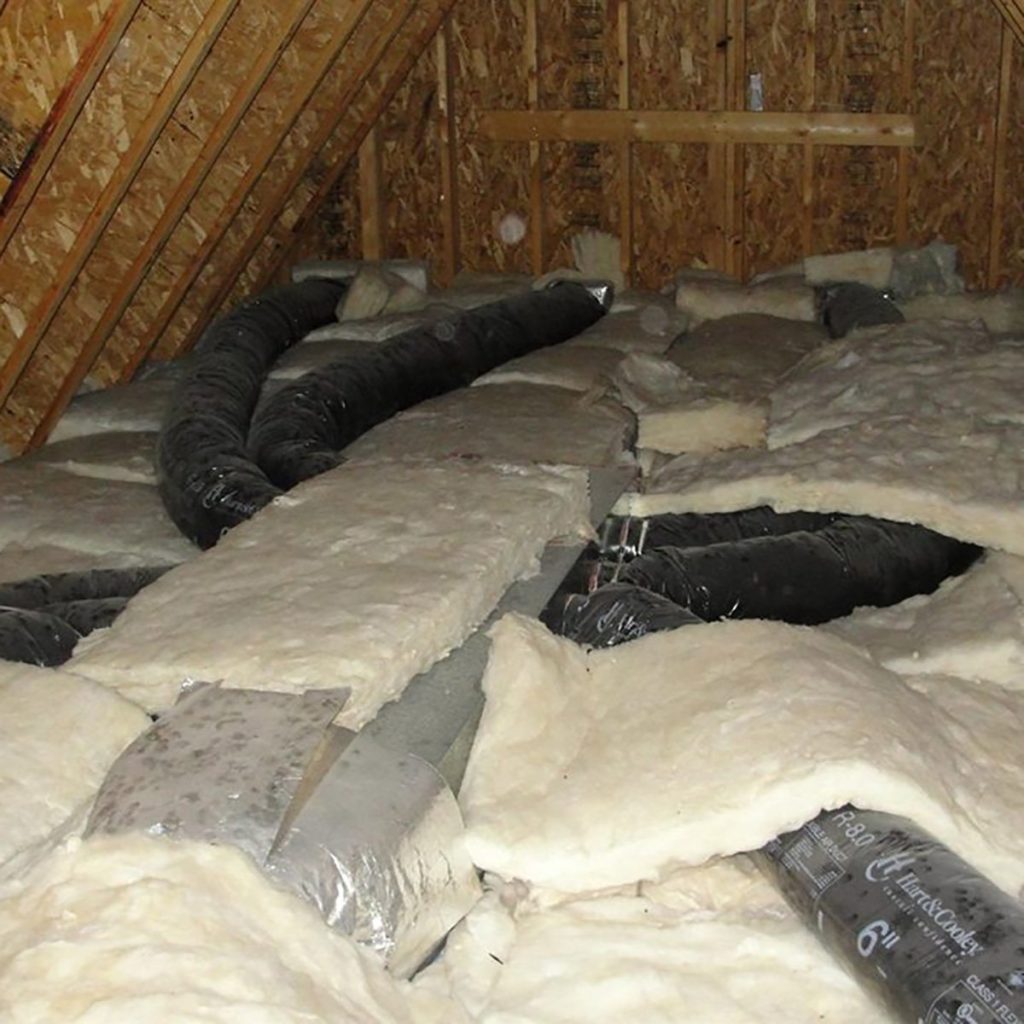As a homeowner, it can seem like professional HVAC contractors have it all figured out. After all, we’re the ones you trust to get your projects done correctly and in a timely manner.
Heat pump systems have gained tremendous popularity over the past ten years and Halifax is the perfect climate for heat pump systems. We have relatively mild winters and our summers are progressively getting hotter and lasting longer. Because of the exponential growth and increased demand for new heat pump systems in Halifax there has been a significant rise in small business’s and independent installers promoting and selling heat pump systems.
Many of these new companies have un-experienced installation crews that aren’t licensed and the others that do have licensed installers do not have the experience or knowledge to design, properly size or layout a new heat pump system for your home. Just because you employ licensed installers does not mean that the salesperson, who is designing and selling you the system has any formal training at all, since this is NOT a legislative requirement many of them are just “sales”, and here lies the problem.
We receive many calls from customers that are looking to purchase a new heat pump system and like most have an upper floor that is cut into several bedrooms. There are several HVAC contractors that are suggesting and quoting these customers on the installation of a unit that would be located in your attic and then ducted throughout the upper level to supply heating and cooling to all the rooms on the top level. Although this may seem like a very practical and smart option we believe that this is in fact a very bad idea.
The Problems With Installing a Heat Pump In your Attic
- The Ducting cannot be cleaned.
- They are the least efficient option.
- The EnerGuide ratings are not based on attic installations.
- Rodents can get into the duct system
- Problems can go undetected.
- The servicing of the system is more difficult.
- Mold and dust can accumulate in the equipment & duct system.
- The heat pump system will work harder to defrost.
- They do not qualify for rebates from Efficiency Nova Scotia.
- Insurance companies MAY NOT cover damages.
- Drafts and dust issues.
ducts can't Be cleaned Properly
A major issue with installing a heat pump system in your attic is that you cannot have the ducts properly cleaned and in most cases they can only be replaced if they become filthy or full of mold. The reason for this is because the ducting that is being used for these installations is a flexible type that is made of light duty plastic or canvas material (Like your dryer vent). These ducts cannot withstand the poking and vacuuming that is done when preforming a proper duct cleaning .

installing a heat pump in your attic reduces its efficiency
During the summer when the outside temperature is over 30C the attic space in your home can get over 50C.
Additionally, when it is -15C outside it is also the same temperature in your attic. Heat pumps can only operate to a certain point before they are no longer capable of providing the heating that the home needs; if you locate the part of the system that distributes the hot air to your home in the attic, it will lose its effectiveness much faster than if the unit was properly located within the heated space of the home.
Imagine how efficient your heat pump system is when it is surrounded by these extremely hot and cold temperatures. In many cases a system would need to be over sized in order to compensate for this added heating/cooling load and we know for sure that many HVAC contractors that are choosing to install heat pump systems this way are not taking this into consideration.
Although the ducts are insulated many of the systems that we have seen have the lowest rated insulation surrounding the ducts (R4.2). The duct insulation values from the heat pumps we have seen is not adequate enough to keep the system operating very efficiently.

For the most part attics are known as unconditioned space in your home. This means an air leak could significantly reduce your home’s overall efficiency. To avoid this, HVAC contractors must take care to properly seal and insulate the ducting—something not all of them do to the same degree of precision and even if the ducts are installed perfectly there’s still the possibility that leaks will develop. Ductwork naturally expands and contracts with the temperature changes, and in time that can loosen duct seals.
We believe that all heat pumps should be efficient and provide a return on investment. It has been our experience that most consumers are concerned with saving energy and reducing their heating costs when looking at converting or adding a heat pump system to their home so we always want to be sure we are fully transparent and upfront about the expected outcome of a system we recommend.
Both Nova Scotia Power and Efficiency Nova Scotia promote the purchase of heat pumps for their comfort and energy cost savings.

the Ener-guide ratings are not based on attic installations.
The constant hot or cold air surrounding the system makes this type of heat pump installation the least efficient of all possible scenarios. In fact, the efficiency rating of such a system is so low that they do not qualify for any rebates from efficiency Nova Scotia.
If you thought you were buying a high efficiency heat pump system when you looked at the EnerGuide ratings in the brochure, think again. The efficiency ratings that are provided on the brochures and websites do not apply when you install the system in your attic.
SEER and HSPF ratings are based on specific indoor and outdoor temperatures and conditions. Once you install a heat pump system in your attic you have changed these design conditions and therefor your system EnerGuide ratings are no longer accurate. The SEER, HSPF and EER ratings on a heat pump system would be much lower from what is listed on the marketing and engineering data for any said system that is installed in an attic space.
Attic heating ducts are Winter nesting places for rodents
Many attics become winter nesting places for mice and other rodents and we have seen first hand the destruction to the insulated duct systems that have been installed. The duct systems are warm during the winter so the rodents chew holes in the vapour barrier of the insulated duct and build their nests inside. This will cause excessive amounts of moisture and condensation that will eventually work its way across the attic and the ceiling of your home, not to mention you will have feces and other harmful things build up inside the ducting.

Repairs may be more costly & delayed
When it is the hottest outside it is much hotter in your attic and if you need a repair on one of these days, you may be waiting awhile before it is safe enough for a technician to work in such hot conditions. If a system needs a significant repair it could take a technician hours to complete and if the attic temperature is over 50C they wont be able to withstand being in such an environment for much more than 10 mins at a time. Here at Atmosphere we follow the department of health and safety recommendations and ensure that our employees are kept safe. This is a real issue and in many cases we will not provide service for these types of systems.
Problems can go undetected
No matter what kind of attic heat pump system you have, it’s easy to forget about it until something goes wrong. But if your unit is hidden in some forgotten corner of your attic, it’s even more likely that you’ll ignore it—and you may even forget about routine maintenance tasks like changing your filters, or cleaning your condensate drain. A clogged condensate drain can create big problems if they go unchecked. For instance, a clog in your drain line can cause condensation from your heat pump unit to back up and spill out over the drain pan, leading to mold in your insulation and drywall, rotting attic floor joists, and ceiling leaks in the rooms below your attic—all things you don’t want for your home, trust us.

Drafts and Increased Dust Issues
When a home is built there is what is known as the “vapour barrier” that is installed on your ceiling before the insulation or drywall is installed. This film of plastic is all sealed up with foam and acoustic sealant to block out air leakages and dust from the insulation that is lying in the attic. When HVAC contractors install a ducted system in your attic they cut holes through this barrier and the drywall to install the vents that will supply the air to each room. When they cut these holes, however, many are not taking the time or material to properly re-seal the vapour barrier around the ducting that is now penetrating through to the interior of the house. This will cause a lot of draft and heat loss during the winter as well as introduce a lot more dust from the fine particles of insulation that will become airborne as the system operates and pulls air back through the duct system return. If you already have a heat pump system installed in your attic and east way to tell if these holes have been properly sealed is to take the ceiling grill off and look between the drywall and the vent pipe that is coming down through. If the plastic is just sitting there and there is no tuck tape or some form of acoustic sealant installed around the vent pipe then you are exposed to the attic and this is not good for your heating efficiency of the home.
Your insurance may not cover damages
If a system is found to be improperly installed or installed against the manufactures recommendations an insurance company may forfeit any claims that may arise from water damage or other issues stemming from the heat pump system. It is very important to check and ensure that your home is covered in the event that there are issues with a heat pump system being installed in your attic.